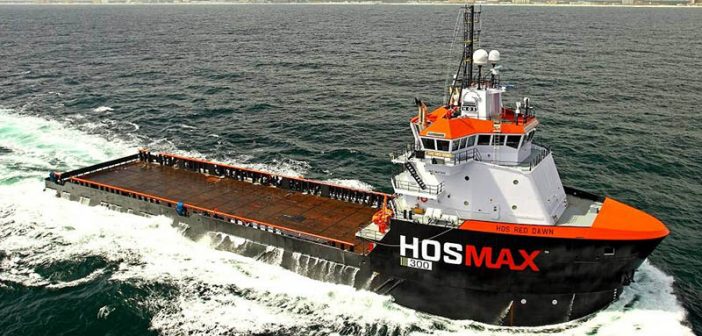Yesterday, the National Offshore Safety Advisory Committee (NOSAC) approved recommendations to increase the ability of energy service vessels to assist in disaster response activities.
The recommendations can be found in the final report entitled, “Use of Offshore Supply Vessels (OSVs) and other vessels in restoration and recovery efforts.” The report was produced by NOSAC's Restoration & Recovery Activity Subcommittee.
Yesterday's report finalizes and builds upon an interim report approved by NOSAC in March. Those recommendations where submitted on an interim basis with the hope that they could be implemented prior to the 2019 hurricane season. The Offshore Marine Service Association (OMSA) said that both reports are the product of a proposal they made after Hurricane Maria in 2017.
According to NOSAC's final report, during the 2017 hurricane season, multiple significant storms hit the North American region requiring a substantial response from the U.S. maritime industry, including the offshore energy sector. A number of U.S.-flagged vessels that were capable of performing necessary, critical functions came to the aid and support of affected U.S. citizens and interests. Other vessels, however, were blocked by strict and sometimes conflicting interpretations of U.S. Coast Guard regulations. In response to these circumstances it became apparent that further action is warranted to resolve disparities between known U.S.-fleet capabilities and the varying interpretation and enforcement of existing regulations. Likewise, efforts are needed to raise the level of understanding of fleet capabilities and of the requirements of the U.S. government entities requiring its services.
“U.S. companies have invested billions in building complex and versatile vessels and the training of American mariners to safely operate those vessels," OMSA President Aaron Smith said in a statement. "This report creates an innovative framework for utilizing these investments to help Americans and our neighbors in their time of need. My hat is off to the subcommittee. It is invigorating to see how the team of industry experts were able to apply their talents to a project which will expedite and streamline disaster response.”
The final report makes numerous recommendations to the Coast Guard including:
- The Coast Guard apply the District 8 (which covers the Gulf of Mexico) Policy Letter 09-2001 nationwide. This policy letter provides a pathway for energy-industry vessels to participate in other industries by spelling out reasonable design, mission, and capability requirements on such vessels.
- The Coast Guard apply the District 8 Policy Letter 01-2017 nationwide. This policy letter allows energy-industry vessels to provide emergency berthing to emergency response workers, thereby opening up hotel rooms for disaster victims and allowing disaster personnel to stay closer to where they are working.
- The Coast Guard create and publish explicit instructions outlining how vessel operators may become a pre- approved disaster response resource.
- The Coast Guard and other concerned federal agencies create a formal communication protocol by which needs and requirements during disasters are explicitly stated both internally (between agencies) and externally (to the industry).
- That the Coast Guard redefine the phrase “international voyage” to clarify that a U.S. vessel is not on an international voyage when it sails from the U.S. mainland to Puerto Rico.
A major recommendation contained in the final report proposes the creation of a Response, Restoration, and Recovery Vessel (TRV) endorsement. This endorsement will be attached to a vessel’s Certificate of Inspection (COI) and would allow the vessel to supersede its operating restrictions if participating in the recovery of a federally declared disaster. The TRV endorsement would be issued outside times of disaster, after an assessment of the vessel’s capabilities, and a review of its anticipated disaster response activities.
While the subcommittee’s recommendation of a TRV endorsement would allow vessels to supersede their operating restrictions, the report does not recommend that they be allowed to take priority over correctly certificated vessels. Instead, the report recommends that vessels with the correct certifications be utilized first. If such vessel or vessels could not be found or mobilized, the government would turn to a TRV-endorsed vessel. The report notes that this tiered-based response will require more coordination between the Coast Guard, the Maritime Administration (Marad), and the Federal Emergency Management Agency (FEMA). The report found that such coordination was severely lacking during Hurricane Maria.
The NOSAC report signifies a groundbreaking effort that tackles many of the regulatory challenges confronted in 2017 by vessel operators in the aftermath of Hurricane Maria, OMSA said.
While it addresses many of the challenges, the work is not yet complete, according to Chad Fuhrmann, OMSA's director of regulatory affairs and co-chair of the Restoration & Recovery Activity Subcommittee. “This initiative doesn’t end here," he said. “With the continuing threats to the Jones Act, this report denotes only the beginning of a long-term effort promoting the use of existing and extraordinarily capable U.S. resources in defense and support of humanitarian and national interests.”




